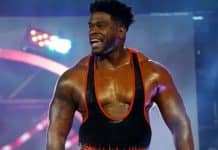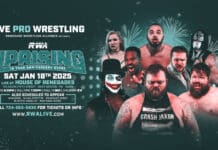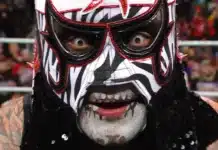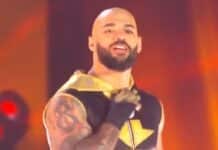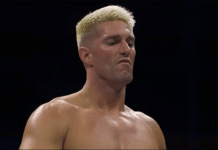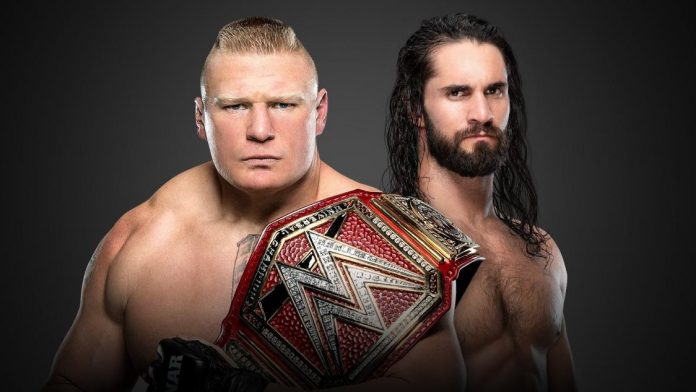
Just a few weeks ago, the WWE made a very public announcement that Paul Heyman and Eric Bischoff were added to the management team as Executive Directors of Raw and Smackdown respectively. Despite the initial statement that this wouldn’t be a role on television, Heyman more or less acknowledged it during a promo this week on Raw. As I said in an article a few days after the announcement, this whole situation could be a smoke screen to attempt to skew the perception of the product, which might be possible because the “new era” of Raw yielded mixed results so far. For example, Bobby Lashley and Braun Strowman went through the stage with the addition of pryo that got noticed for the camera work as well as the TV time that was used for it. At the same time, the brand extension is still a convoluted mess with the nonsensical wild card rule, Shane McMahon continues to get more TV time than most of the roster, and the main event scene will be recycled for Summer Slam next month.
Too often over the past year, management claimed that there was a “fresh start” or a “shake up,” but those terms are just an attempt at a PR spin. The illogical structure of the product hinders the ability for those on the roster to truly establish themselves as legitimate money-drawing stars and thus WWE brass relies on nostalgia acts to boost programming that can’t garner ratings for the current audience. As far as the structure goes, one of the prime examples is the use of the previously mentioned Shane McMahon since the heel turn. In theory, Drew McIntyre being paired with him should elevate his status in the company by the association with the last name McMahon. Instead, Shane is the focus of the angle while Drew is more or less his sidekick. In many ways, how this storyline was booked is basically the opposite of how an effective angle is designed. Again, Shane is the prime figure based on the promos and how the angle is portrayed on television. Shane doesn’t endorse Drew ahead of a match, but rather he’s in the matches himself and McIntyre is often lost in the shuffle. Plus, it’s not as though Drew is being protected for a long term program that will payoff to make him a more prominent member of the roster, as he was pinned by Cedric Alexander this week on Raw. Don’t get me wrong, Cedric is extremely talented, but up until two weeks ago he was forgotten on 205 Live so how does that put McIntyre in a better spot on Raw? Yes, there’s speculation that it could be McIntyre vs. The Undertaker at the pay-per-view next month, but if that happens and even if Drew wins, considering the track record, will it matter in the future? The bottom line is, this angle with Shane McMahon hasn’t done anything to make Drew McIntyre a bigger star and for someone that is supposedly a priority for the writing team, he continues to be at mid-card status.
According to The Wrestling Observer’s Dave Meltzer, Braun Strowman has been working through some injuries, and while most of what Meltzer says should be taken with a grain of salt, Strowman does appear to have some mobility problems in recent months. As I said previously, management missed the boat with Braun a few years ago, and considering that injuries might’ve taken their toll on his body with the grueling schedule, he might be stuck at his current position on the card. It’s a very disappointing scenario because of how over Braun was at one point and the effort was clearly there so he worked hard to reach that level with the crowd. I’ve often discussed the level of complacency and mediocrity that takes place because of the 50/50 nature of the product. Essentially, very few stand out as stars when the brand is pushed as the draw and talent become interchangeable so viewership plateaued. Along with that, there’s the aspect to the product that most of what happens as far as stipulations and results are often inconsequential because it doesn’t really have an impact on the direction of the show. How many times is there a match at a pay-per-view and then a rematch the next night on Raw? How often are main event match-ups repeated because a perceived lack of star power for new challengers? Furthermore, other than Roman Reigns, how many new stars that could boost numbers have been made in the past few years?
Part of the reason for the lack of a new group of stars that could usher in a new era after John Cena’s run is because management has yet to truly let a talent run with the top spot in the company.Sure, they tried with Roman Reigns, but that was rejected so Brock Lesnar currently has the spot as the top drawing card. The problem is, Brock was paid major money for a limited schedule to set up a payoff to put Reigns over, but Reigns didn’t get over at the time so Lesnar still has the most star power on the roster, mostly because of how strong he was booked previously for the payoff to get Reigns over that was rejected. During that Roman push, there were others that got over with the audience, but were kept at a lower tier because the bigger picture was based on Reigns, which would’ve been fine if there was a successful payoff at the conclusion. Now, most of the upper card competitors are more or less at the same level in terms of star power. The example I’ve used before is, if Finn Balor was booked against Brock at Wrestlemania instead of Seth Rollins, would it make a difference in the numbers?
Basically, management hasn’t truly decided to attempt to run with the next top star. At 42, Lesnar obviously isn’t the future so when does the Brock experiment payoff? When does the limited schedule to allow for special appearances propel the next major star? Let’s be honest here, the “special appearances” theory became more of a defense for a show that didn’t have the title to build around than anything else. Perhaps, the ratings have slipped because the viewing audience knows that most of the major booking on Raw is based strictly around the shows after PPVs and progress usually isn’t made on a weekly basis so a viewer could skip weeks of TV without actually missing any of the storylines.
I don’t know if Seth Rollins is the next main event star for the company to build around, but the writing team certainty hasn’t help the situation. Seth was the competitor to finally beat Brock Lesnar and he only had a three month run as champion. During that time, he feuded with Baron Corbin, who was portrayed as the reason the ratings tanked earlier this year so how exactly has Rollins been made a bigger star since he won the title? Furthermore, Brock Lesnar won the title at Extreme Rules and Seth won the battle royal to set up a rematch at Summer Slam. So, within the span of three months with the countless hours of television and extended pay-per-views on the network, the status of the product is more or less the same. The storyline for the main event of Summer Slam is the recycled angle from Wrestlemania. All things considered, did the results of the biggest show of the year really make a difference to the product?
Next week will be a “Raw Reunion” show and it’s definitely an event used as a short term ratings boost, which is fine. However, what does it say about the product when the majority of the nostalgia acts that will appear on the show are bigger stars than anyone on the current roster?
What do you think? Comment below with your thoughts, opinions, feedback and anything else that was raised.
Until next week
-Jim LaMotta
E mail [email protected] | You can follow me on Twitter @jimlamotta


